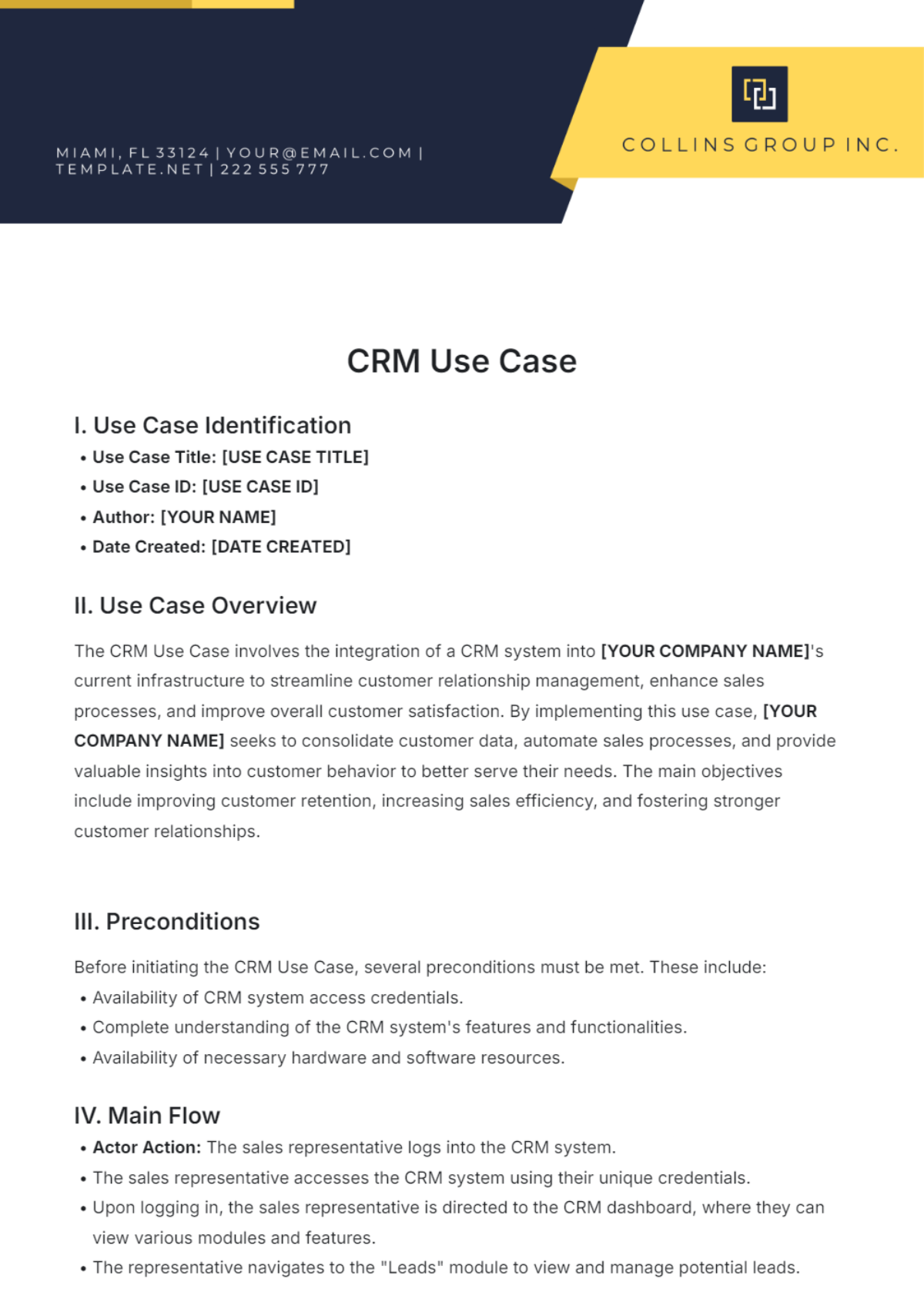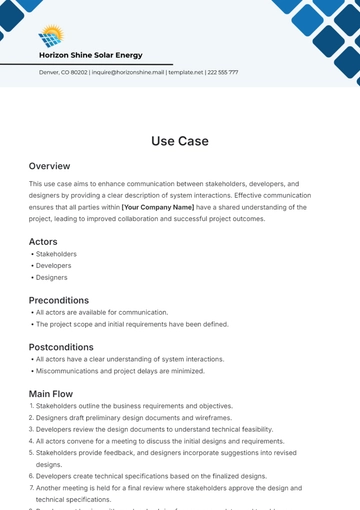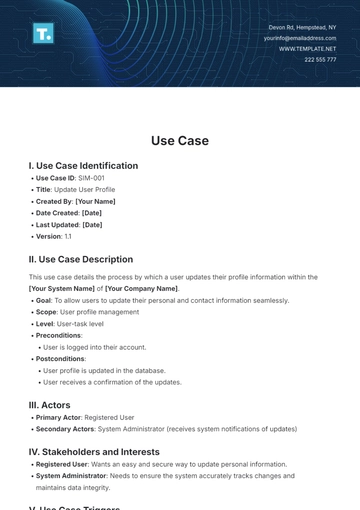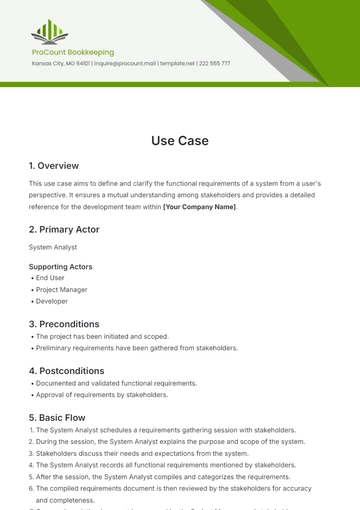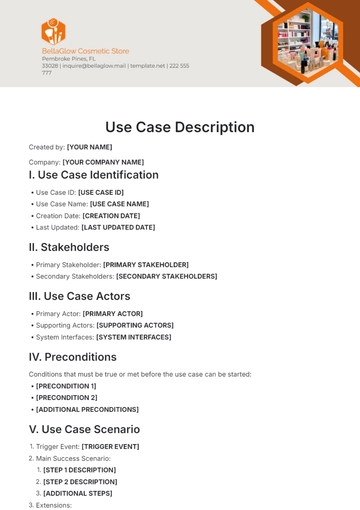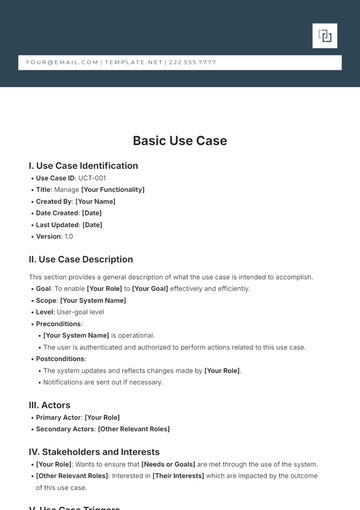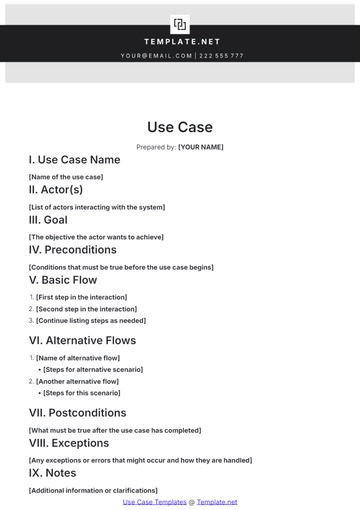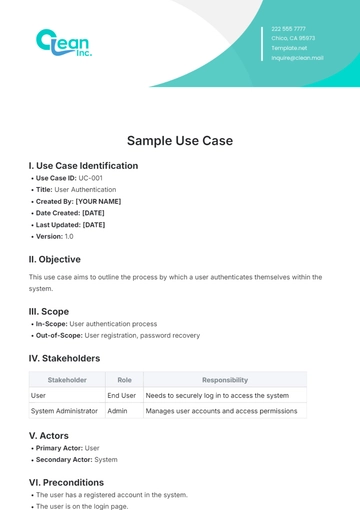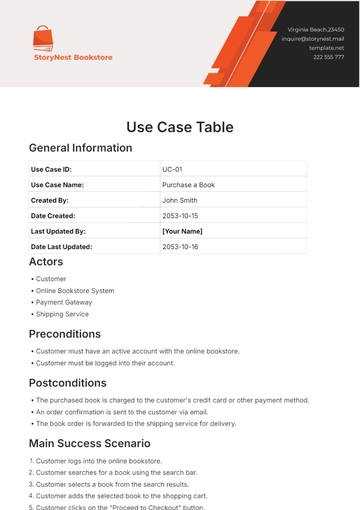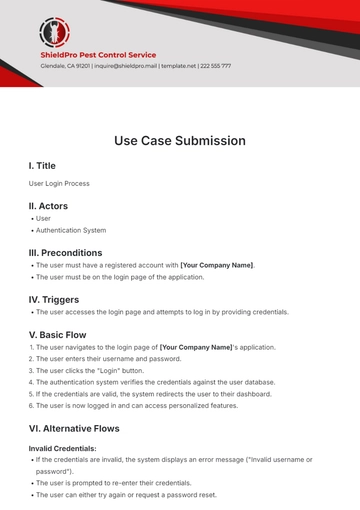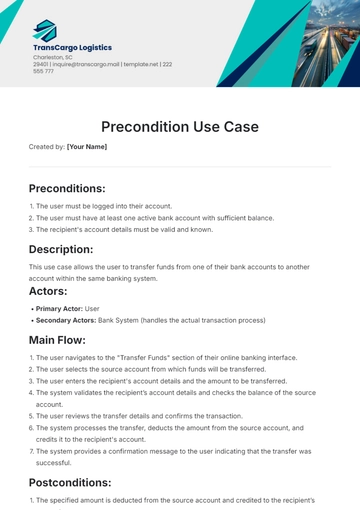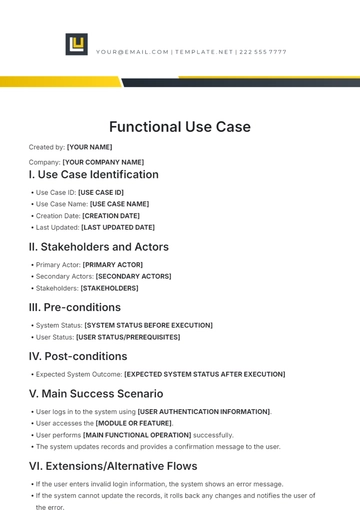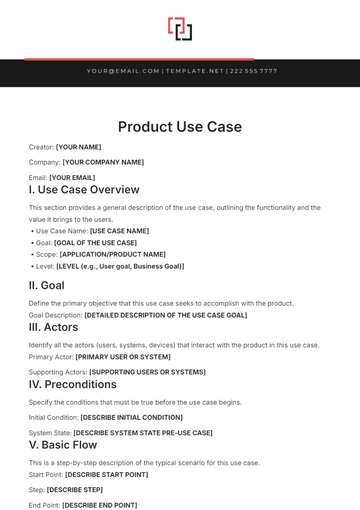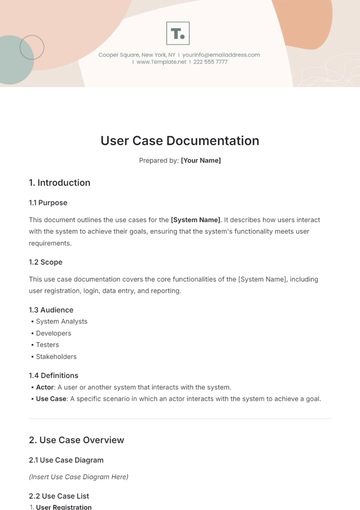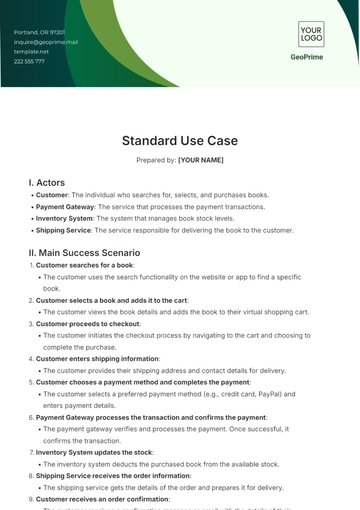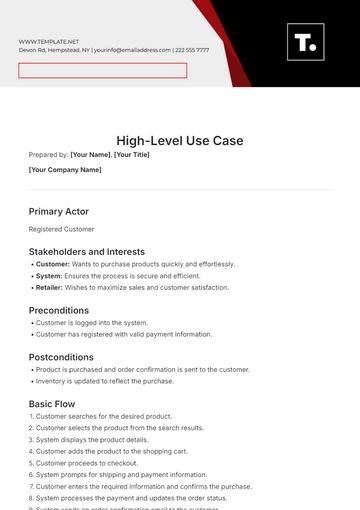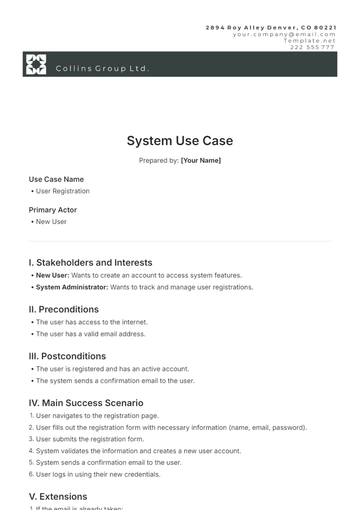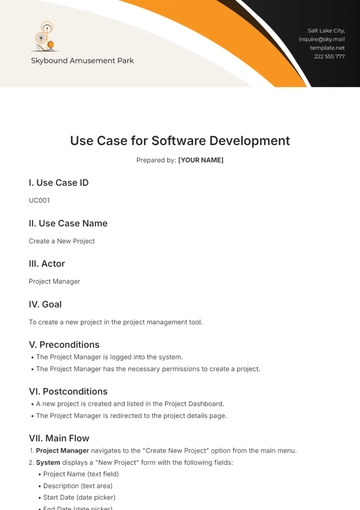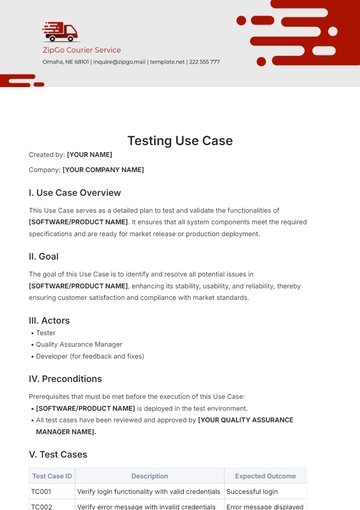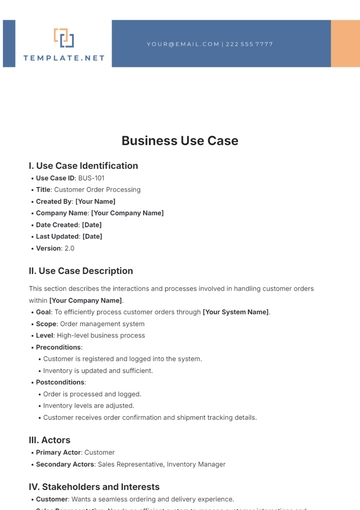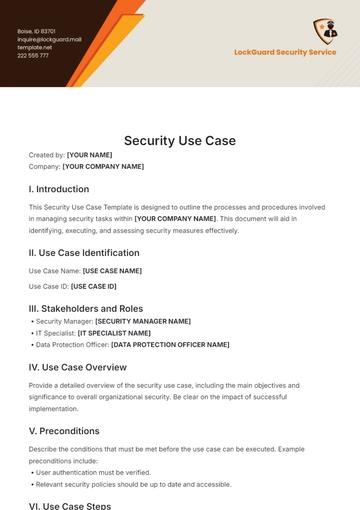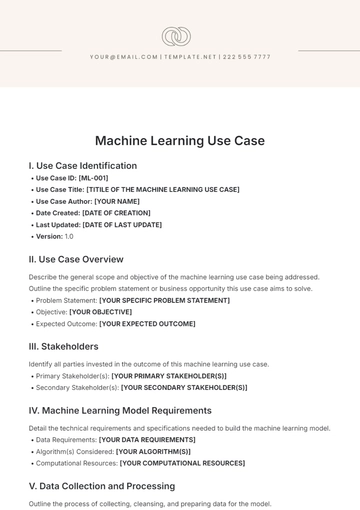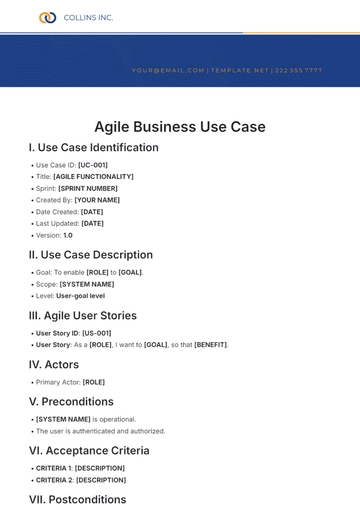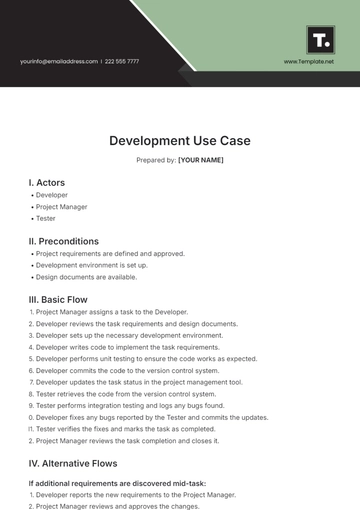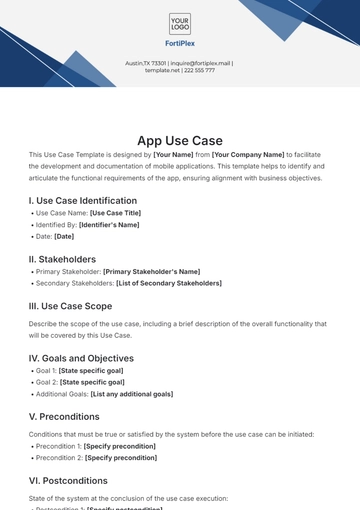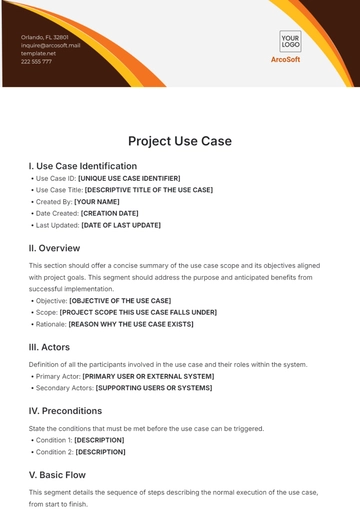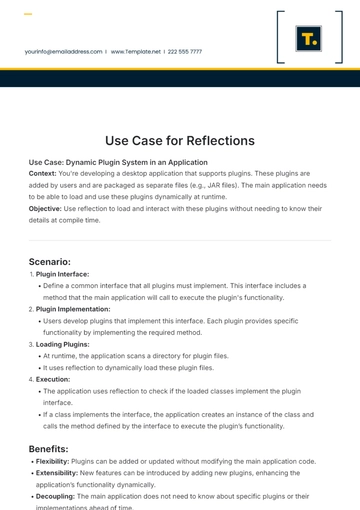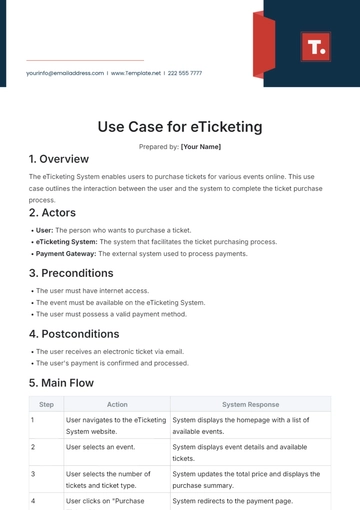CRM Use Case
I. Use Case Identification
Use Case Title: [USE CASE TITLE]
Use Case ID: [USE CASE ID]
Author: [YOUR NAME]
Date Created: [DATE CREATED]
II. Use Case Overview
The CRM Use Case involves the integration of a CRM system into [YOUR COMPANY NAME]'s current infrastructure to streamline customer relationship management, enhance sales processes, and improve overall customer satisfaction. By implementing this use case, [YOUR COMPANY NAME] seeks to consolidate customer data, automate sales processes, and provide valuable insights into customer behavior to better serve their needs. The main objectives include improving customer retention, increasing sales efficiency, and fostering stronger customer relationships.
III. Preconditions
Before initiating the CRM Use Case, several preconditions must be met. These include:
Availability of CRM system access credentials.
Complete understanding of the CRM system's features and functionalities.
Availability of necessary hardware and software resources.
IV. Main Flow
Actor Action: The sales representative logs into the CRM system.
The sales representative accesses the CRM system using their unique credentials.
Upon logging in, the sales representative is directed to the CRM dashboard, where they can view various modules and features.
The representative navigates to the "Leads" module to view and manage potential leads.
V. Alternate Flows
Flow Title: Lead Creation via Email
In the event of receiving a lead via email, the sales representative follows an alternate flow.
The sales representative receives a lead via email.
The representative logs into the CRM system and navigates to the "Leads" module.
The representative creates a new lead within the CRM system, manually entering the lead's information extracted from the email.
VI. Post Conditions
Upon completion of the CRM Use Case, the system will be in the following state:
The CRM system will have updated lead information.
Sales representatives will have access to detailed customer data.
Customer interactions and engagements will be recorded and tracked in the CRM system.
VII. Exceptions
Exceptions that may occur during the execution of the CRM Use Case include:
System downtime or maintenance.
Incomplete or inaccurate lead information.
Inadequate user training resulting in misuse of the CRM system.
VIII. Extensions
Possible extensions to enhance the CRM Use Case:
Integration with marketing automation tools.
Implementation of AI-powered analytics for better customer insights.
Expansion of CRM functionalities to include customer service management.
IX. Related Use Cases
Related CRM use cases or processes connected to this use case include:
X. References
References to documents, resources, or systems referenced in the CRM Use Case:
XI. Appendix
The appendix includes additional information, diagrams, or supporting documents relevant to the CRM Use Case, such as:
Use Case Templates @ Template.net
